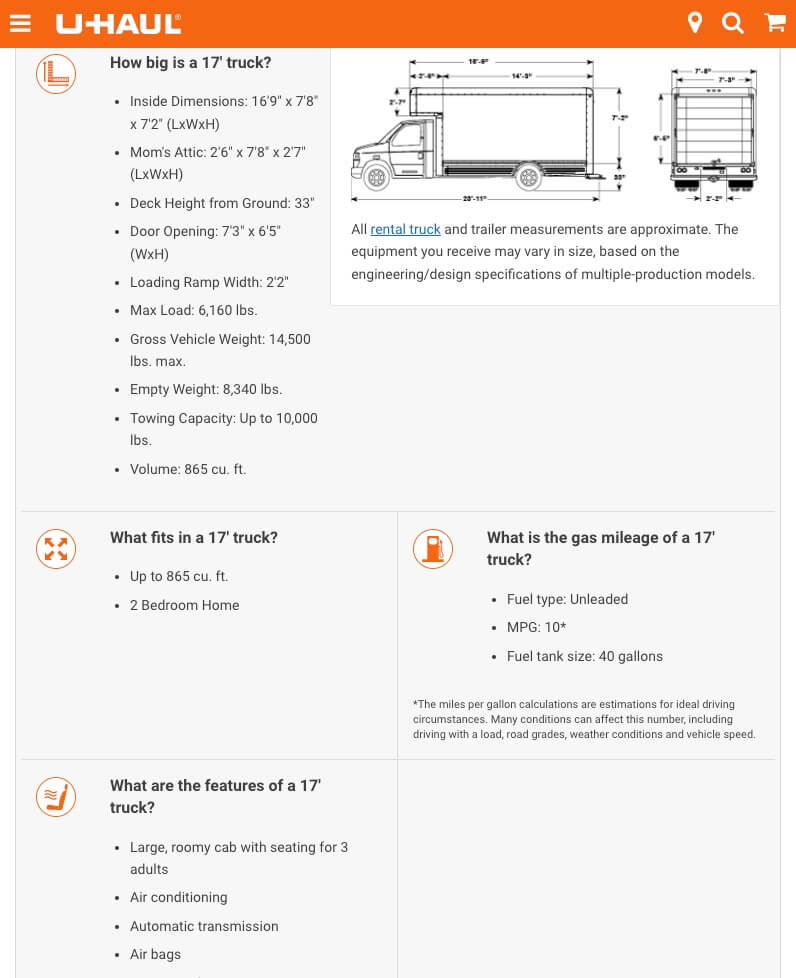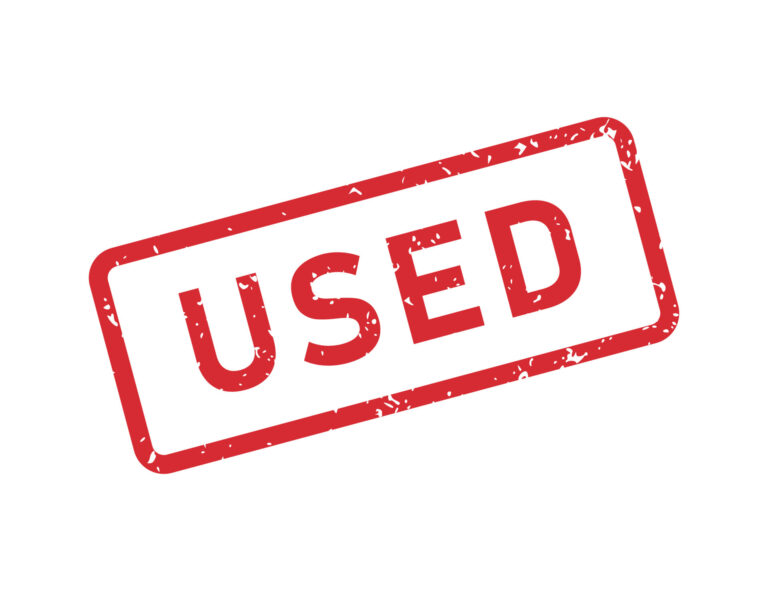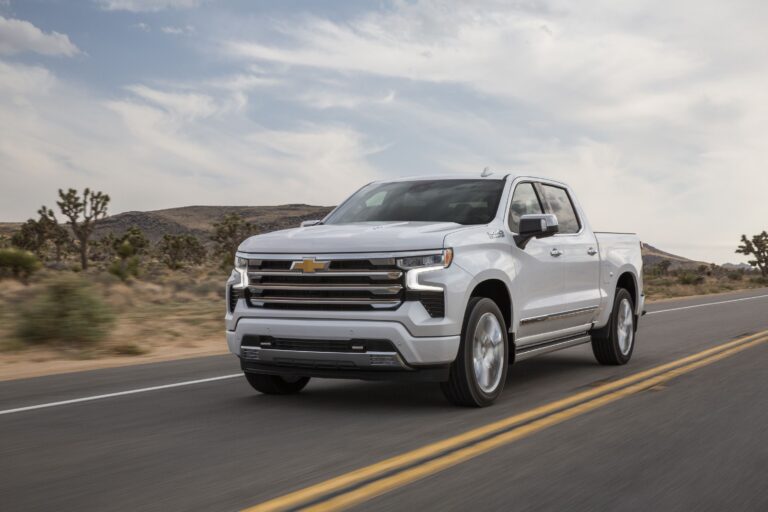Calculate How Much Money I Need To Pay For Gas For U-Haul Truck
Calculate How Much Money I Need To Pay For Gas For U-Haul Truck cars.truckstrend.com
Moving is a significant life event, often accompanied by a seemingly endless list of tasks, expenses, and logistical puzzles. Among the most common and often underestimated costs is fuel, especially when you’re relying on a large rental truck like a U-Haul. While the rental fee covers the truck itself, the responsibility for fueling it up falls squarely on your shoulders. Accurately calculating how much money you’ll need to pay for gas for your U-Haul truck isn’t just about avoiding a last-minute scramble at the gas station; it’s a crucial step in budgeting your move, preventing unexpected financial stress, and ensuring a smoother journey to your new destination.
This comprehensive guide will demystify the process of estimating your U-Haul gas expenses. We’ll delve into the factors that influence fuel consumption, provide a step-by-step calculation method, offer practical tips for saving money, and address common questions, empowering you to budget wisely and drive confidently.
Calculate How Much Money I Need To Pay For Gas For U-Haul Truck
Understanding U-Haul Truck Fuel Efficiency (MPG)
Before you can calculate your gas cost, you need a realistic understanding of how much fuel a U-Haul truck consumes. Unlike your personal vehicle, these trucks are designed for hauling heavy loads, and their fuel efficiency, measured in Miles Per Gallon (MPG), is significantly lower.
The MPG of a U-Haul truck is not a fixed number; it varies primarily based on the truck’s size and, crucially, the load it’s carrying. Here are general estimates for common U-Haul truck sizes:
- Cargo Van: 18-20 MPG
- 10-foot Truck: 10-12 MPG
- 15-foot Truck: 8-10 MPG
- 17-foot Truck: 7-9 MPG
- 20-foot Truck: 6-8 MPG
- 26-foot Truck: 5-7 MPG

Important Considerations for MPG:
- Load Weight: A heavier load will drastically decrease your MPG. The estimates above are for a moderately loaded truck. A fully loaded truck, especially a larger one, will consume significantly more fuel.
- Driving Style: Aggressive driving (rapid acceleration, hard braking, speeding) will reduce fuel efficiency.
- Terrain: Driving uphill or through mountainous regions requires more power and thus more fuel.
- Weather Conditions: Strong headwinds or driving in extreme temperatures can impact MPG.
- Towing: If you’re towing a car or a trailer behind your U-Haul, expect a substantial drop in MPG – often by 20-30% or even more.


These figures are estimates. Always err on the side of caution and budget for the lower end of the MPG range, especially if you anticipate a heavy load or challenging driving conditions.
Key Factors Influencing Your Gas Bill
Beyond the truck’s inherent fuel efficiency, several dynamic factors will directly impact your total gas expenditure:
- Truck Size: As discussed, this is the most fundamental determinant. A 26-foot truck will always cost more to fuel for the same distance than a 10-foot truck.
- Total Distance of Your Trip: This is self-explanatory. A 100-mile move will cost significantly less in gas than a 1,000-mile cross-country journey. Accurately mapping your route is essential.
- Current Gas Prices: Fuel prices fluctuate daily and vary significantly by region, state, and even within a city. What you pay in one state could be vastly different from another.
- Load Weight: The heavier your belongings, the harder the truck’s engine has to work, leading to higher fuel consumption. Distributing weight evenly can help, but sheer mass is the primary factor.
- Driving Habits: Your personal driving style plays a huge role. Smooth acceleration, consistent speeds, and anticipating stops will save fuel compared to stop-and-go driving, speeding, and aggressive maneuvers.
- Route Terrain and Conditions: Long stretches of flat highway are more fuel-efficient than winding, hilly roads. Urban driving with frequent stops and starts also consumes more gas than highway cruising.
- Towing a Vehicle/Trailer: If you’re utilizing U-Haul’s car dolly or auto transport services, remember that the added weight and aerodynamic drag will noticeably increase your fuel costs.
How to Calculate Your U-Haul Gas Cost: A Step-by-Step Guide
Calculating your gas cost is a straightforward process once you have the necessary information. Follow these steps for an accurate estimate:
Step 1: Determine Your U-Haul Truck Size.
Identify the exact size of the U-Haul truck you plan to rent (e.g., 15-foot, 20-foot). This will dictate your estimated MPG.
Step 2: Estimate Your Truck’s MPG.
Based on the truck size, use the lower end of the estimated MPG ranges provided earlier. For instance, if you’re getting a 15-foot truck, assume 8 MPG rather than 10 MPG to be conservative. If you plan to tow, reduce this estimate further (e.g., an 8 MPG truck might drop to 6-7 MPG with a tow).
Step 3: Calculate Your Total Trip Distance (in Miles).
Use an online mapping service like Google Maps, MapQuest, or your GPS to get the exact mileage from your starting point to your destination. Remember to account for any planned detours, stops, or even a slight buffer for unexpected traffic or re-routes. Add an extra 5-10% to your mileage estimate for good measure.
Step 4: Find Current and Anticipated Gas Prices.
Research average gas prices along your route. Websites and apps like GasBuddy or AAA provide real-time gas prices. If your trip spans multiple states, check average prices in those states. Always use a slightly higher price than the current average to account for potential price increases during your rental period. For example, if gas is currently $3.50/gallon, budget for $3.75 or $4.00/gallon.
Step 5: Perform the Calculation.
Now, you can plug your numbers into these simple formulas:
- Total Gallons Needed = Total Miles / Estimated MPG
- Total Cost = Total Gallons Needed × Price Per Gallon
Step 6: Add a Financial Buffer.
Once you have your estimated total cost, add an additional 10-15% as a buffer. This extra amount will cover unforeseen circumstances like unexpected detours, higher-than-anticipated gas prices, or slightly worse fuel efficiency due to heavy traffic or headwinds. It’s always better to overestimate slightly than to run out of budget.
Example Calculation:
-
Truck Size: 15-foot U-Haul
-
Estimated MPG: 8 MPG (conservative estimate)
-
Total Trip Distance: 500 miles (including buffer)
-
Anticipated Gas Price: $4.00 per gallon
-
Total Gallons Needed: 500 miles / 8 MPG = 62.5 gallons
-
Total Estimated Cost: 62.5 gallons × $4.00/gallon = $250.00
-
Add 15% Buffer: $250.00 × 0.15 = $37.50
-
Total Budgeted Gas Cost: $250.00 + $37.50 = $287.50
Practical Tips for Saving on U-Haul Gas
While large trucks aren’t known for their fuel economy, you can still take steps to minimize your gas expenses:
- Pack Smartly: Distribute weight evenly within the truck to maintain balance. Avoid overpacking, as excess weight is the enemy of fuel efficiency.
- Drive Conservatively: Maintain a steady speed (around 55-65 MPH on highways, if safe and legal), avoid rapid acceleration, and brake gently. Aggressive driving wastes significant fuel.
- Plan Your Route Carefully: Use GPS to identify the most direct route. If possible, avoid areas known for heavy traffic or steep inclines that will force the engine to work harder.
- Check Tire Pressure: Properly inflated tires improve fuel efficiency. Check the tire pressure before you leave (U-Haul trucks typically have higher PSI than passenger cars).
- Use Cruise Control: On long, flat highway stretches, cruise control can help maintain a consistent speed and optimize fuel consumption.
- Avoid Excessive Idling: If you’re stopped for more than a minute, turn off the engine. Idling consumes fuel without moving the vehicle.
- Fill Up Strategically: Use gas price comparison apps to find the cheapest gas stations along your route. Gas prices can vary significantly even within a few miles.
- Return the Truck with the Agreed-Upon Fuel Level: U-Haul typically requires you to return the truck with the same amount of fuel it had when you picked it up (often full). If you return it with less, you’ll be charged a premium rate for the fuel needed, which is significantly more expensive than filling it yourself.
Potential Challenges and Solutions
Even with careful planning, you might encounter challenges:
- Inaccurate MPG Estimates: Your truck might perform worse than expected due to a heavy load, old engine, or unexpected headwinds.
- Solution: Always use the lower end of the MPG range in your calculations and build in a generous financial buffer.
- Fluctuating Gas Prices: Gas prices can change rapidly, especially over long distances or during peak travel seasons.
- Solution: Check prices frequently leading up to your move. Budget for a slightly higher price than current averages. Use gas apps to find cheaper stations.
- Unexpected Detours or Traffic: Construction, accidents, or heavy traffic can extend your mileage and increase fuel consumption due to stop-and-go driving.
- Solution: Add an extra 5-10% to your total mileage estimate. Stay updated on traffic conditions using navigation apps.
- Truck Issues: While rare, a mechanical issue could impact fuel efficiency.
- Solution: Do a quick visual inspection before driving off. If you notice any significant performance issues, contact U-Haul.
Sample Gas Cost Calculation Table
This table provides example calculations for different U-Haul truck sizes and trip distances. Please note: Gas prices and MPG are estimates and will vary. Use this as a template for your own calculations.
| U-Haul Truck Size | Estimated MPG (Conservative) | Example Trip Distance (Miles) | Example Gas Price ($/Gallon) | Gallons Needed (Miles / MPG) | Estimated Gas Cost (Gallons * Price) | Recommended 15% Buffer | Total Budgeted Cost |
|---|---|---|---|---|---|---|---|
| Cargo Van | 18 | 100 | $3.80 | 5.56 | $21.13 | $3.17 | $24.30 |
| 10-foot Truck | 10 | 100 | $3.80 | 10.00 | $38.00 | $5.70 | $43.70 |
| 15-foot Truck | 8 | 100 | $3.80 | 12.50 | $47.50 | $7.13 | $54.63 |
| 20-foot Truck | 6 | 100 | $3.80 | 16.67 | $63.35 | $9.50 | $72.85 |
| 26-foot Truck | 5 | 100 | $3.80 | 20.00 | $76.00 | $11.40 | $87.40 |
| 500 | |||||||
| Cargo Van | 18 | 500 | $3.80 | 27.78 | $105.56 | $15.83 | $121.39 |
| 10-foot Truck | 10 | 500 | $3.80 | 50.00 | $190.00 | $28.50 | $218.50 |
| 15-foot Truck | 8 | 500 | $3.80 | 62.50 | $237.50 | $35.63 | $273.13 |
| 20-foot Truck | 6 | 500 | $3.80 | 83.33 | $316.65 | $47.50 | $364.15 |
| 26-foot Truck | 5 | 500 | $3.80 | 100.00 | $380.00 | $57.00 | $437.00 |
Frequently Asked Questions (FAQ)
Q: What type of gas do U-Haul trucks take?
A: All U-Haul trucks run on regular unleaded gasoline. You do not need to use premium or any other specialized fuel.
Q: Do I have to fill up the U-Haul tank before returning it?
A: U-Haul’s policy typically states you must return the truck with the same amount of fuel it had when you picked it up. This is often a full tank. Failure to do so will result in U-Haul charging you for the missing fuel at a significantly higher rate per gallon than you would pay at a gas station.
Q: How accurate are U-Haul’s stated MPG estimates?
A: U-Haul’s estimates are general guidelines. Actual MPG can vary greatly based on the factors discussed (load, driving style, terrain, weather). Always use a conservative estimate for your budgeting.
Q: Does towing a car behind the U-Haul significantly increase gas consumption?
A: Yes, absolutely. Towing adds significant weight and aerodynamic drag, which can decrease your MPG by 20-30% or even more, depending on the vehicle being towed and the terrain. Factor this in when estimating your MPG.
Q: What if gas prices change drastically during my move?
A: This is why adding a financial buffer is crucial. If prices rise significantly, you’ll have extra funds. If they drop, you’ll have money left over. Use gas price apps to find the best deals along your route.
Q: Can I use a gas credit card to save money?
A: Yes, if you have a credit card that offers cash back or rewards on gas purchases, this can be a smart way to save a little extra on your large fuel expenditure.
Conclusion
Calculating the gas money needed for your U-Haul truck might seem like a minor detail in the grand scheme of moving, but it’s a critical component of a well-planned and stress-free relocation. By understanding the factors that influence fuel efficiency, following a systematic calculation method, and implementing smart driving and fueling strategies, you can accurately budget for this significant expense.
A little proactive planning goes a long way. Don’t let an unexpected gas bill add to the pressures of moving day. Arm yourself with knowledge, calculate wisely, and drive confidently to your new home, knowing your budget is firmly in control.





